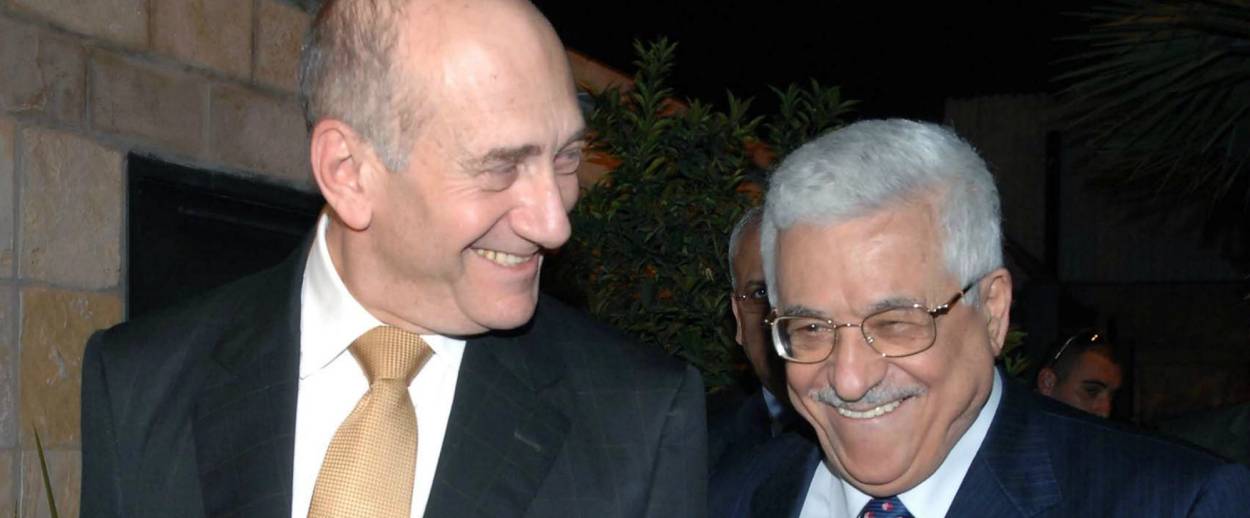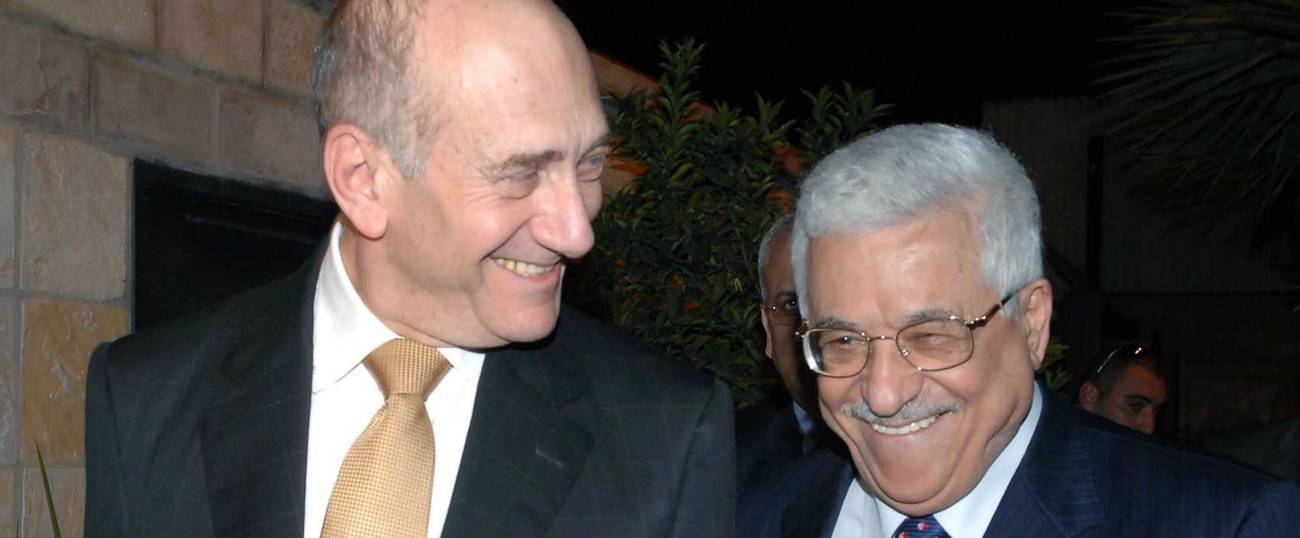In September 2008, Israeli Prime Minister Ehud Olmert offered Palestinian President Mahmoud Abbas a map, a proposal that would give the Palestinians 93.7 percent of the West Bank, with Israeli territory to make up 5.8 percent, and a corridor to Gaza from the West Bank for the other 0.5 percent. Olmert insisted that Abbas initial the map before taking it. It was clear that this was Israel’s final offer. Abbas rejected it. He never met Olmert again.
Israel wanted to keep this failed negotiation a secret. The Palestinians had other interests, however, and that’s how I discovered the offer. This has been my news story since 2009. Then, media bias killed it. Now, the crippled state of media in the Internet era almost killed it. Almost.
In March 2009, chief Palestinian negotiator Saeb Erekat was interviewed in Arabic on Al-Jazeera. When I saw the MEMRI translation I immediately understood its significance: Erekat disclosed that Abbas had turned down an offer that would have given the Palestinians a state in almost all of the West Bank, all of Gaza, and parts of Jerusalem. Then I found out about the map. No one else had the story.
Excited about this scoop, I raced into my bureau chief’s office at the AP in Jerusalem. Imagine my shock when I was told it’s not a story—and I was banned from writing about it. It just couldn’t be a legitimate story, in line with the new definition of journalism.
The profession I joined in the 1960s wasn’t about helping anyone. It was about reporting and explaining the news. This new definition of journalism, apparently requires choosing sides. This became clear to me as long ago as 1988, at the beginning of the First Intifada, when I saw a reporter jump out of her car in the middle of a Gaza riot and shout at the Palestinians throwing rocks at the vehicle: “Why are you doing this? I’m trying to help you!” Like most Western media sources, she wanted to frame the uprising—the Palestinians as people—as helpless victims, to pillory the Israelis as the cruel oppressors. Stories that didn’t fit that framework had a hard time seeing the light of day. Even a peace offer.
So, naturally, despite the fact that Israel offered the Palestinians a state twice—in 2000 and 2008—the world saw Israel as the intransigent side. The 2008 proposal was largely unreported in world media.
This month, Israel TV’s Channel 10 broadcast a three-part series of documentaries about the failed peace efforts of 2000 and 2008. The third part featured interviews with Olmert and Abbas. There, for the first time, Abbas admits what I knew six years ago: Olmert offered him the map and demanded that he initial it. “I did not agree,” Abbas told his interviewer. “I rejected it out of hand.” He claimed that he isn’t an expert on maps. In fact, he went back to his office and sketched the map from memory—quite accurately.
So there was my story. And again, no one was reporting it.
I left the AP in early 2014, so now, unlike 2009, I was free to write about it independently. I wrote an article that was quickly picked up by Jewish outlets, but I also wanted the general media to get this “news.” I found that top AP people were not aware of the interview, because they no longer have enough staff to put a senior editor on the evening shift. The ravages of the Internet age are evident throughout the industry, and cutbacks have affected news coverage as much as bias has.
When I explained to my former colleagues the significance of what Abbas said, the AP agreed that it was worth reporting. The AP story ran a full day after the Abbas interview was aired. From there it went everywhere.
It’s a temporary victory—the story of Israel’s generous peace offer and Abbas’s rejection is out there, finally, and making some waves. But, again, this is temporary, because the underlying bias, the framing of the conflict—strong, cruel Israel against weak, victimized Palestinians—has not changed.
And so, I’m left with a bitter observation: If this news is making waves now, imagine what would have happened if I had been allowed to report it in real time?

